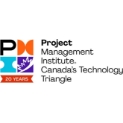May 06 2024 at 08:00PM
Using Storytelling to Improve Project Risk Management
Risk is a constant companion for every project manager, lurking in the background of every goal and output. Many project managers use detailed risk registers, numerical analyses, and backup plans to prepare themselves, but they often miss one of the most effective tools they have: storytelling. Stories can help a project team grasp the risks better by making them clear, interesting, and meaningful.
How Project Risk Management Benefits from Storytelling
Making Data Relatable: Data and statistics are essential for showing risks, but they can be hard to connect with for stakeholders. Stories turn vague data into concrete, understandable situations, making risks more vivid and personal.
Attracting Interest: Stories stand out. They break the dullness of project reports and draw the attention of stakeholders and team members. Interested stakeholders are more likely to comprehend the effects of risks and take part in reducing them.
Making Complexity Clear: Projects can have many complications, especially with different stakeholders, regions, or new technology. Storytelling makes these complications clear by showing how actions and outcomes are connected, giving a better view of risks.
Creating Narratives for Your Risk Management
Know the Characters: Characters make stories interesting. In risk management, these are the stakeholders, project team members, clients, and others affected by risks. You need to know their interests and motivations to tell stories that matter.
Provide the Context: Explain the situation of the project where risks may occur. Is it a volatile economic situation? Are there legal challenges or technological shifts? Providing the context helps stakeholders understand the terrain where risks exist.
Make a Problem: Any story needs a problem to be solved. In project management, the problem is the risk. What if a key vendor quits? What if hackers attack your customers? Telling these issues as problems in a story makes them more pressing and clearer.
Show the Solution: Give solutions that match your risk reduction plans. How will your team deal with the cybersecurity breach? How will you find other vendors? Stories should make stakeholders feel confident that you have ways to handle risks.
Using Stories to Enhance Your Risk Management Approach
Risk Identification: Rather than doing a typical risk brainstorming session, ask team members to tell stories of previous projects or situations where risks occurred. Use these stories as sources of inspiration to identify comparable possible risks.
Risk Evaluation: When analyzing risks, think about how they would influence the project's characters and the broader context. What would be the outcome if this risk occurred? What effect would it have on the project schedule, cost, and stakeholders?
Risk Reduction Planning: Create risk management strategies by using storytelling workshops. Imagine different situations through fictional stories, talk about possible actions, and assess their effectiveness. This method involves stakeholders in finding solutions together.
Risk Communication: Use stories to highlight the significance of key risks to executives and stakeholders. Rather than showing data-heavy risk reports, use examples and narratives that stress the human consequences of risks. This approach makes sure that risks are fully understood and addressed.
Examples of Effective Storytelling in Risk Management
The ‘Disappearing Supplier’ Scenario: Write a story where a key vendor suddenly leaves the industry, causing setbacks and budget problems. Describe the impacts for various parties, then switch to show how having multiple suppliers beforehand avoided a disaster.
The ‘Data Breach’ Incident: Create a story about a fake data breach incident, explaining how customers became distrustful and the reputation suffered. Show how a good cybersecurity plan and clear communication could have reduced this.
The 'Regulatory Change' Plot: Create a story where unexpected rule changes disrupt a project's development but highlight the team's readiness through legal advice and compliance plans.
Best Practices for Risk Storytelling
Be Genuine: Make sure that your stories match the truth of your project. Don't exaggerate and use facts when describing possible risks.
Emphasize Learning Outcomes: Use narratives to illustrate the insights gained from previous projects and how they can inform current risk reduction approaches.
Promote Engagement: Create a culture where team members can openly share their experiences and participate in the storytelling process. Different viewpoints can enhance the quality and authenticity of your narratives.
Update Continuously: As the project goes on, update your stories to account for changing risks. Modify the characters, conflict, and resolution to fit new situations.
Storytelling can have a significant impact on project risk management if used well. By making risks more relatable, increasing involvement, and reducing complexity, stories can enable a better comprehension and preventive strategy for risk reduction. Whether you’re managing a large-scale construction project or a software development effort, using the power of stories will improve your capacity to anticipate and overcome difficulties.
Use storytelling as a key component of your risk management strategy and see how your project team and stakeholders become more involved, ready, and adaptable to the unforeseen changes of any project’s course.



